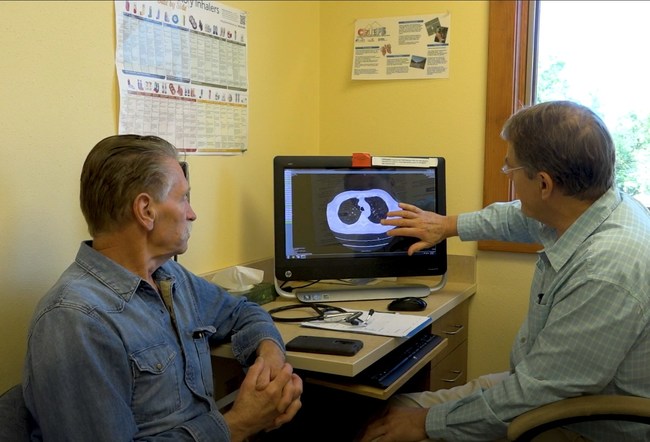LIBBY, Mont., Sept. 29, 2020 /PRNewswire/ — Many people may have a vague idea of what asbestos is, but feel it is a problem relegated to the past and that it has no relevancy in today’s world. The Center for Asbestos Related Disease (CARD) in Libby, Montana is all too aware of how erroneous this view is. Every day CARD screens new people exposed to potentially life-threatening asbestos-laced vermiculite from the now defunct local mine and treats dozens of others who have long-standing asbestos-related diseases that can have a devastating effect on both patients and families. “It’s a long-term issue,” says Dr. Brad Black, medical director at CARD. “Many people forget that diseases caused by asbestos may not show up for over 40 years and don’t understand the lag time between long-ago exposure and disease today. It’s something you always have to be aware of.”

Asbestos has multiple forms, but it is still very much a threat. It has been identified as a causal factor in mesothelioma, lung cancer, asbestosis (or fibrosis of the lung tissue), colon cancer, ovarian cancer, and possibly more forms of malignancy. Unlike many other hazardous substances, there is no level of asbestos that can be considered safe. Even so, the United States has never banned the use of asbestos in industries although nearly 70 other countries have moved to do so. At present, despite a partial ban passed in 1989, products in the U.S. can legally be composed of up to 1% asbestos.
Abatement efforts have been ongoing for years, but there are still thousands of buildings across the country with asbestos-containing products around pipes, in ceilings and roofs, and in other areas where fire retardant or insulation was needed. Thousands of homes and other buildings still have vermiculite insulation, trademarked as Zonolite, that is contaminated with asbestos. This poses a threat, not only to people who live and work in those structures, but also to firefighters and construction crews. Modern vehicle brakes and some talc products can also contain trace amounts of asbestos, so anyone working with them can risk exposure. Current guidelines and statutes protecting these individuals from exposure are nowhere near comprehensive.
CARD takes an active role in educating and advocating for those who have known potential exposures to asbestos. The more people understand about the potentially ravaging effects of Asbestos Related Disease, the safer our work and home environments can become.
About CARD:
The Center for Asbestos Related Disease (CARD) has emerged as a national center of excellence in addressing healthcare issues associated with Libby Amphibole (previously called tremolite) asbestos. The CARD Clinic evolved in response to raised awareness of widespread asbestos exposure in the Libby area that surfaced in 1999. After the ATSDR (Agency for Toxic Substances and Disease Registry) screenings during 2000 and 2001 identified the high number of lung abnormalities, it became apparent to the community that long-term pulmonary care needed to be established in Libby.
Contact: Tracy McNew, Administrative Director
CARD Clinic – Libby, MT
p: 406-293-9274
w: www.Libbyasbestos.org
255475@email4pr.com
SOURCE Center for Asbestos Related Disease

